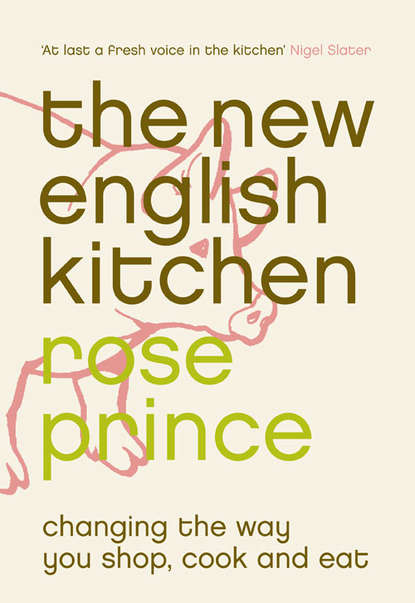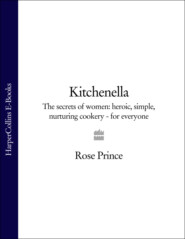По всем вопросам обращайтесь на: info@litportal.ru
(©) 2003-2024.
✖
The New English Kitchen: Changing the Way You Shop, Cook and Eat
Настройки чтения
Размер шрифта
Высота строк
Поля
To eat with cold meat, such as ham, pork, chicken or beef.
Serves 4
6 shallots, sliced
6 tablespoons olive oil
2 cans of butter beans, drained
the leaves from 2 bunches of watercress (the stalks can be
reserved for soup)
sea salt and freshly ground black pepper
In a saucepan, stew the shallots in the oil for about 2 minutes to remove their raw aroma. Add the beans, remove from the heat and leave to steep in the shallot-flavoured oil until cold. Season to taste and add the watercress, stirring the salad well.
This salad will keep in the fridge for a week – the watercress will wilt but it will still taste lovely. Again, this goes against standard food-safety advice but I check it, smell it, and look for any bubbles or bad signs.
kitchen note
Add canned tuna to this recipe (see here (#u6fcae303-23fe-4275-a055-5633ecf4d94f)).
baked chick peas, peppers and potatoes with yoghurt sauce
Another one-pot standard to keep in the fridge for busy weeks when you don’t want to cook. The yoghurt sauce will brighten it, and it’s good alone or as a side-of-the-plate number.
Serves 6–8
3 teaspoons ground cumin
1 teaspoon ground ginger
1 teaspoon freshly ground black pepper
/
teaspoon salt
4 tablespoons vegetable oil
2 onions, sliced
2 red peppers, cut into strips
2 cans of chick peas, drained
20 cherry tomatoes, or 6 small tomatoes, halved
2 sprigs of thyme
600ml/1 pint chicken, vegetable or beef stock
1 tablespoon butter
For the yoghurt sauce:
8 tablespoons plain yoghurt
1 tablespoon olive oil
a pinch of salt
1 teaspoon black onion seeds (nigella)
Preheat the oven to 200°C/400°F/Gas Mark 6. Mix the spices, pepper and salt together in a small bowl – you will need them as you layer the dish.
Heat the oil in a large casserole and add the onions and red peppers. Cook them over a medium heat until they soften, then add a layer of sliced potatoes and season with the spice mixture. Add a layer of chick peas with half the tomatoes and a sprig of thyme, then season again. Repeat the layering process, finishing with a layer of potatoes and using all the spice mixture. Pour over the stock, dot the surface with the butter and bake for 1 hour, or until the potatoes are tender. Leave for half an hour before you eat, to let the flavours merge.
For the sauce, combine the yoghurt with the olive oil and salt in a bowl. Scatter the black onion seeds on top and serve with the baked chick peas.
potatoes
Buying sacks of British potatoes at the roadside, even in cities, is a great economy. They should be sold in paper sacks to keep the light away from them and prevent them turning green. I now keep a metal dustbin outdoors for potatoes but as long as you store them in a cool, dark place they should be fine.
Looking at the supermarket shelves, you would think that only two or three potato varieties grow in the UK. It’s not that Maris Piper, King Edwards or Desiree are dull, simply that there are dozens of other varieties in danger of vanishing unless there is a demand for them – and we, the cooks, are missing out. Many of them are lovely, with colours ranging from white to yellow, and purple to a strange blue-black. Some are waxy, some are earthy and fibrous, some even taste of lemons or chestnuts. Seek out Kerrs Pink, Shetland Black, Wilja and Golden Wonder, as well as some interesting varieties of new potato (see the Shopping Guide). The types of potato grown in domestic gardens are more exciting still – these are the places where you will find old-fashioned varieties such as British Queen, Arran Pilot, Majestic, Suttons Foremost and the various Pentlands.
I would always choose British potatoes over imported but there is a window, between March and May, when supplies are low and the quality is frankly poor. I compromise by buying imports from Cyprus and Spain. I look out for organic when I can, as I do with British potatoes, for clear reasons:
organic potatoes
The season for organic potatoes in Britain is shorter than that for conventionally grown potatoes. The first organic new potatoes are dug in late April/early May and the first large, storable potatoes arrive in shops in September. The late arrival is due simply to the slower growth rate – conventional potatoes grow fast with the help of fertiliser and a lot of water. Using less water and allowing the potato to grow at a natural rate not only strengthens it, protecting it from disease, but it gives the potato more flavour. Here is an instance where there is no doubt at all that an organic food has more flavour than its conventional counterpart. Ordinary potatoes are routinely treated with anti-blight spray – their fast growth means weaker plants that need frequent treatment. They are also treated with sprout suppressants and insecticides after harvest. Organic farmers find that growing several types of potato throughout the season in soil that has been well nourished with manure will also help control disease, but they are allowed to spray with copper to prevent blight. Copper treatments are controversial, as residues remain in the soil, but still greatly preferable to the numerous chemical treatments used on conventional potato farms.
the price of potatoes
Potatoes are caught up in the supermarkets’ price wars – sold at less than their value in order to attract customers. Some poorly flavoured varieties are sold for just a few pence per kilo. The real price of the best conventionally farmed potatoes should in fact be up there with the price of organic potatoes, odd as it may seem. This is around £1.40 per kilo. With a kilo of potatoes yielding about five helpings, that’s 28 pence per helping – still a bargain for a high-quality food.
roast potatoes
Dripping or duck fat is ideal for making really crisp roast potatoes but you can get a good result with vegetable oil using the following method. I routinely sprinkle flour on to the potatoes after the par-boiling stage because it guarantees crispness, especially in summer when potatoes can be watery, but you can leave it out if you wish.
1 large, floury potato per person, plus a couple more for good measure
a little flour for sprinkling
dripping, duck fat or vegetable oil
About 1









